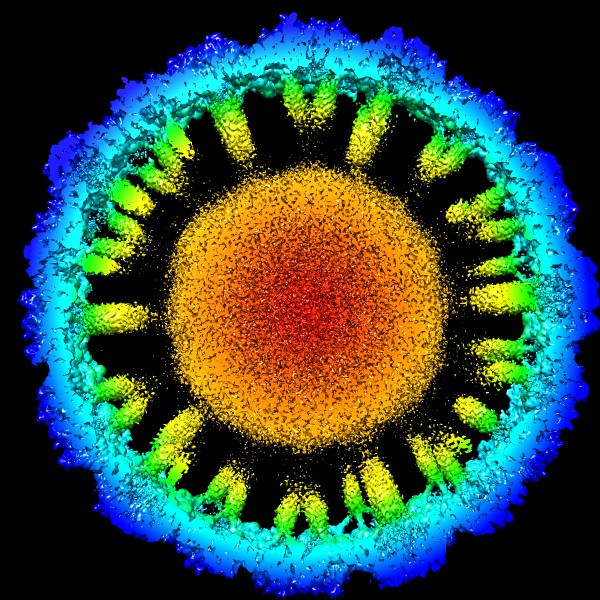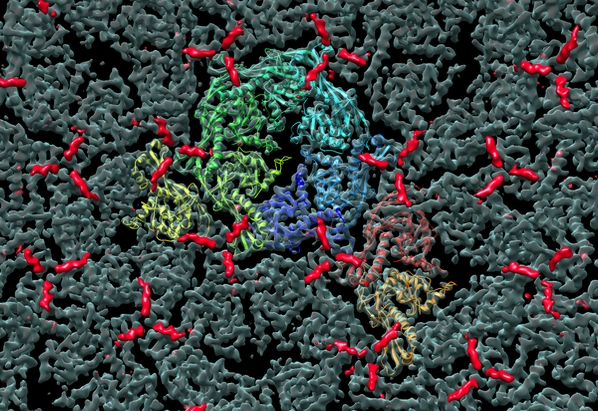|
|
|
|

Comparative capsidomics: We are also studying two larger phages, called D3 and phi1026b in work that started as a collaboration between the Hendrix/Duda and Conway labs and continues. These two phages have proteins which are very similar to the HK97 major capsid protein in sequence, but make capsids that have ~540 subunits in an arrangement called T=9 vs the 420 subunits used by HK97 to make its smaller T=7 capsids. We are hoping that sub-nanometer electron density maps of these larger capsids will help us build models that suggest how capsid size is determined.

This thick slice through the phi1026b Prohead I density map show elongated features protruding from the shell towards the center. We interpret these elements as parts of the scaffolding domain that are largely organized as alpha-helical coiled-coils in several different conformations.

The figure shows models for the 9 different major capsid protein subunits of D3 Prohead II in the transparently rendered Prohead II density map. Also shown in red are the density elements which we were unable to model, which are from the N-terminal portion of the major capsid proteins.